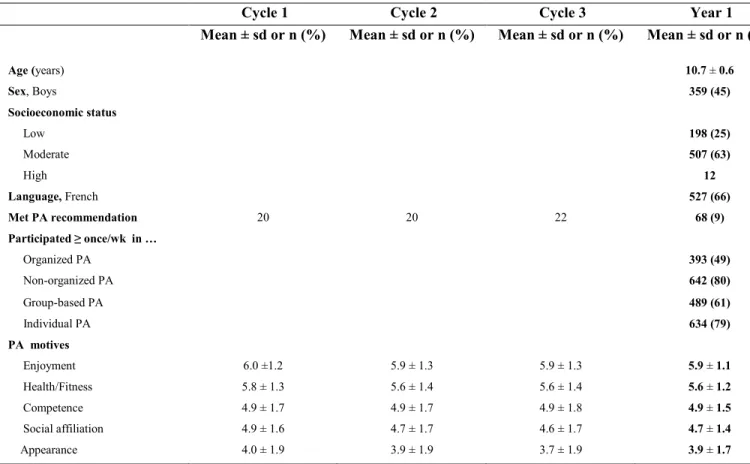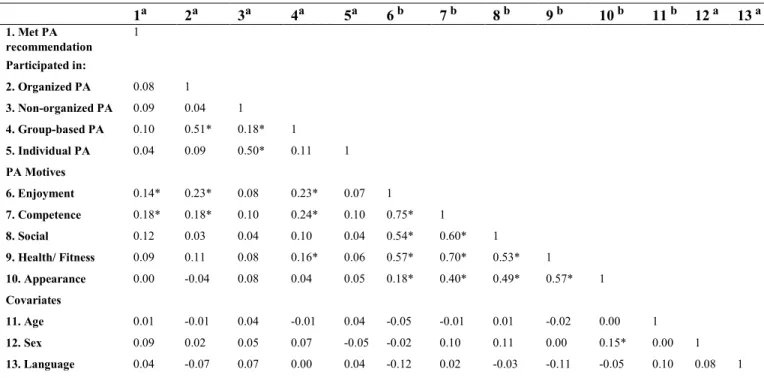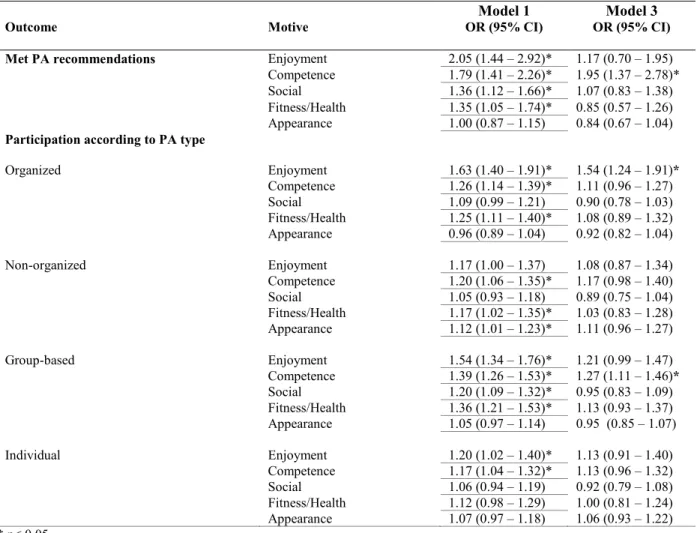Association between physical activity motives and type of physical activity in children
Texte intégral
Figure



Documents relatifs
Yet, only 14 countries (29%) have published data concerning the PA prevalence of Asian school-age children and adolescents and the results of.. those studies are cause for
Via a digital questionnaire, the children indicated if their mother and father are physically active on a regular basis and if they are active together with their
This study as part of the PALUX project (Physical Activity of Children and Youth in Luxembourg) aims to (1) measure children's daily PA patterns using up-to-date
The Luxembourgish children and adolescents are insufficient physically active and the moderate to vigorous physical activity levels are mainly accounted by leisure time..
Additionally, PA behavior was assessed through a self-report online questionnaire using items of the MoMo physical activity
The aim of this study was to describe the published data on compliance of children and adolescents in Europe with PA recommendations using data measured objectively
RESULTS: After controlling for potential confounding variables (age, sex, BMI, parental educational level, fat mass, aerobic fitness and center), adolescents’ attention
In this study, we assessed the relationships between characteristics of the self-reported home and work environments related to PA and actual physical fitness and PA levels in